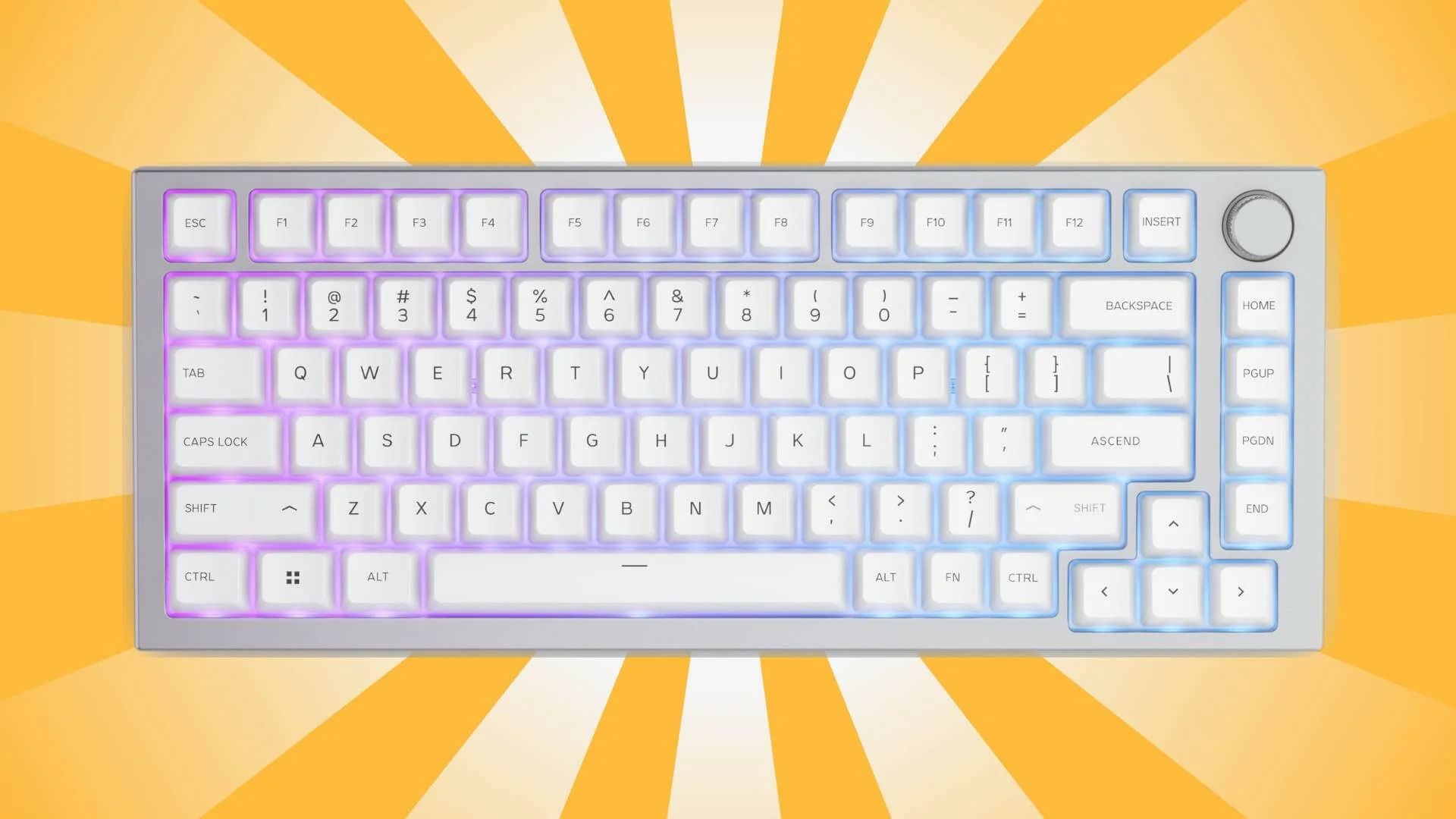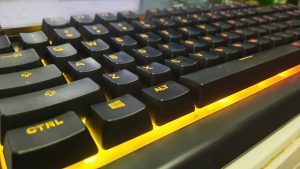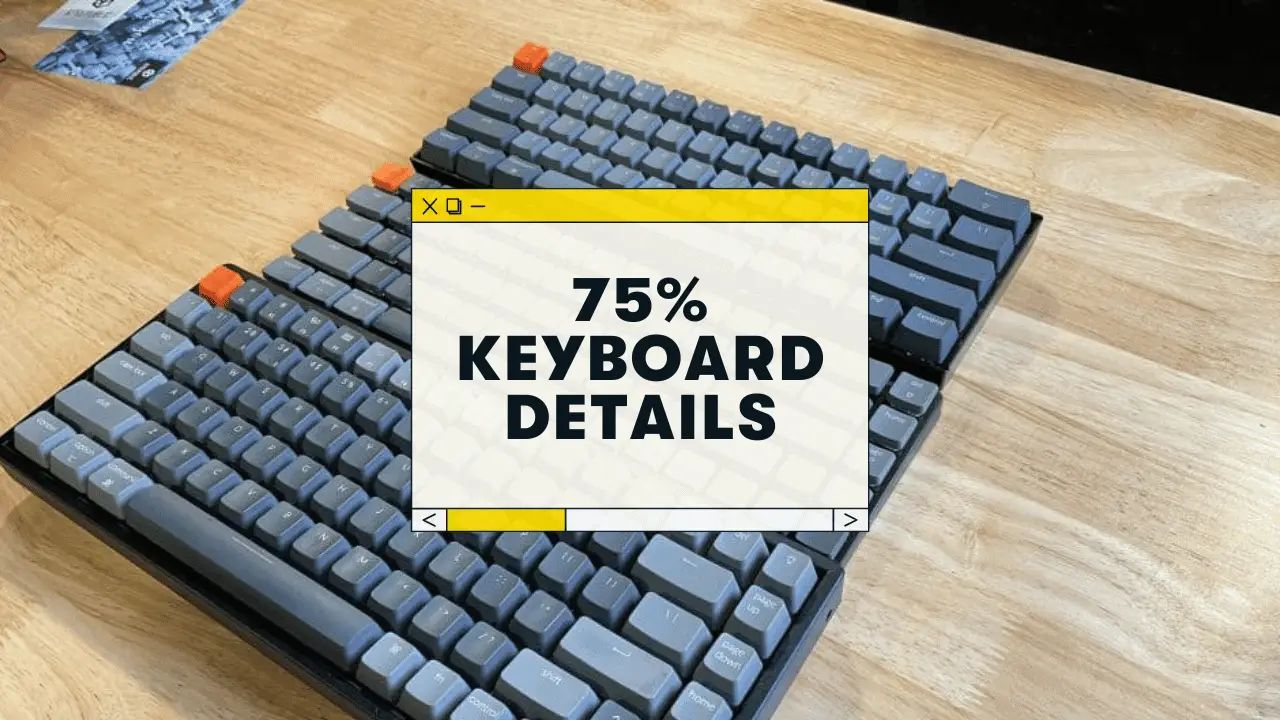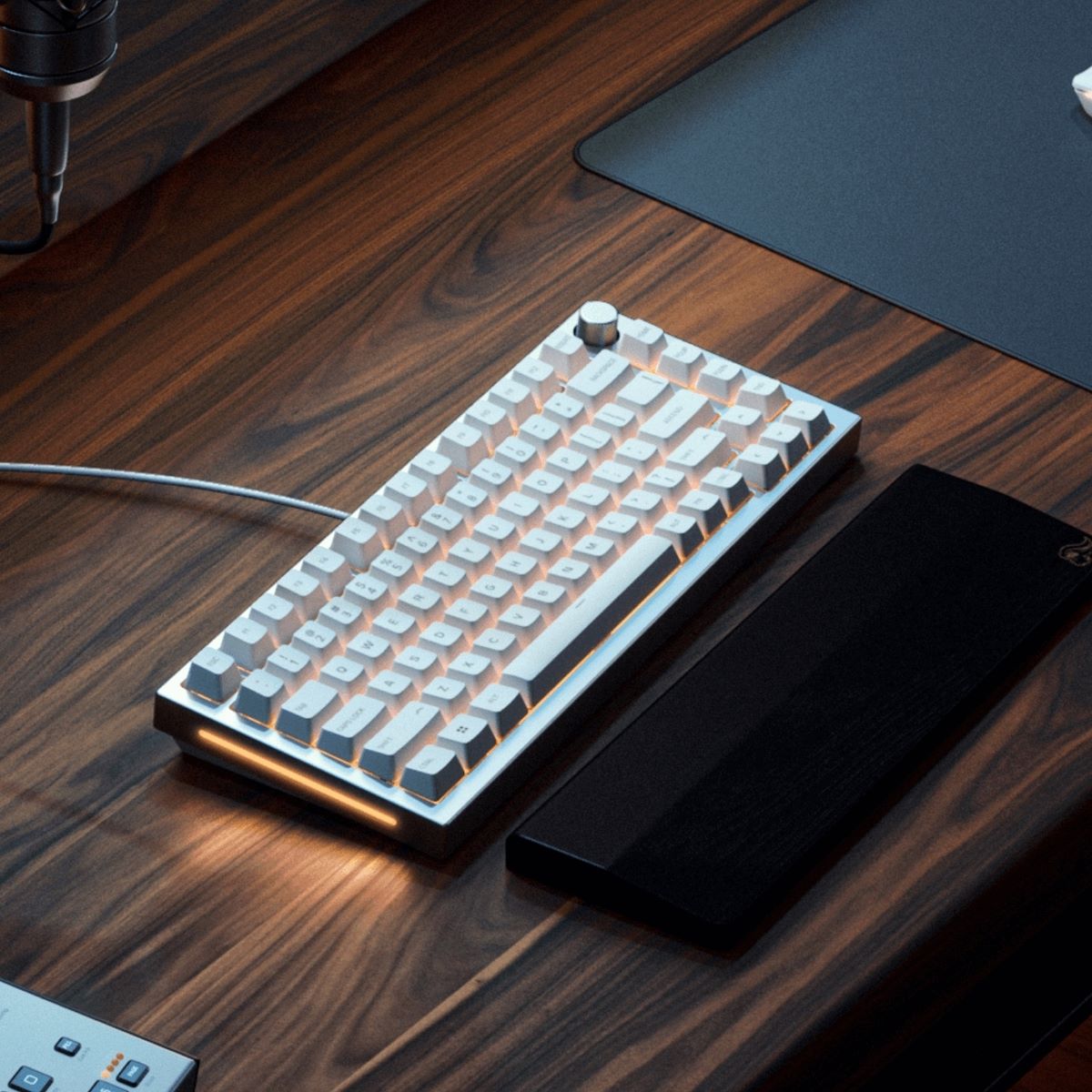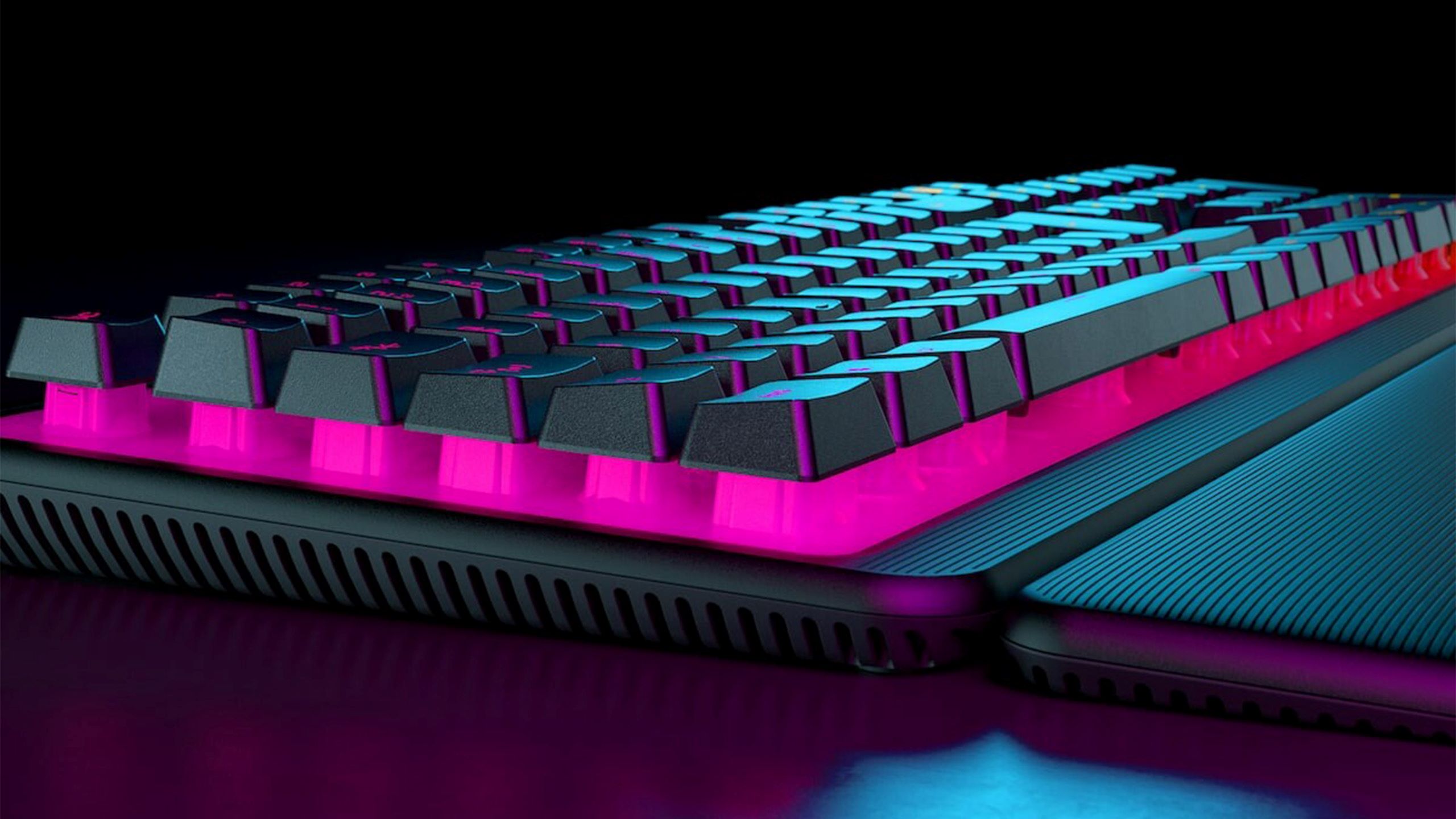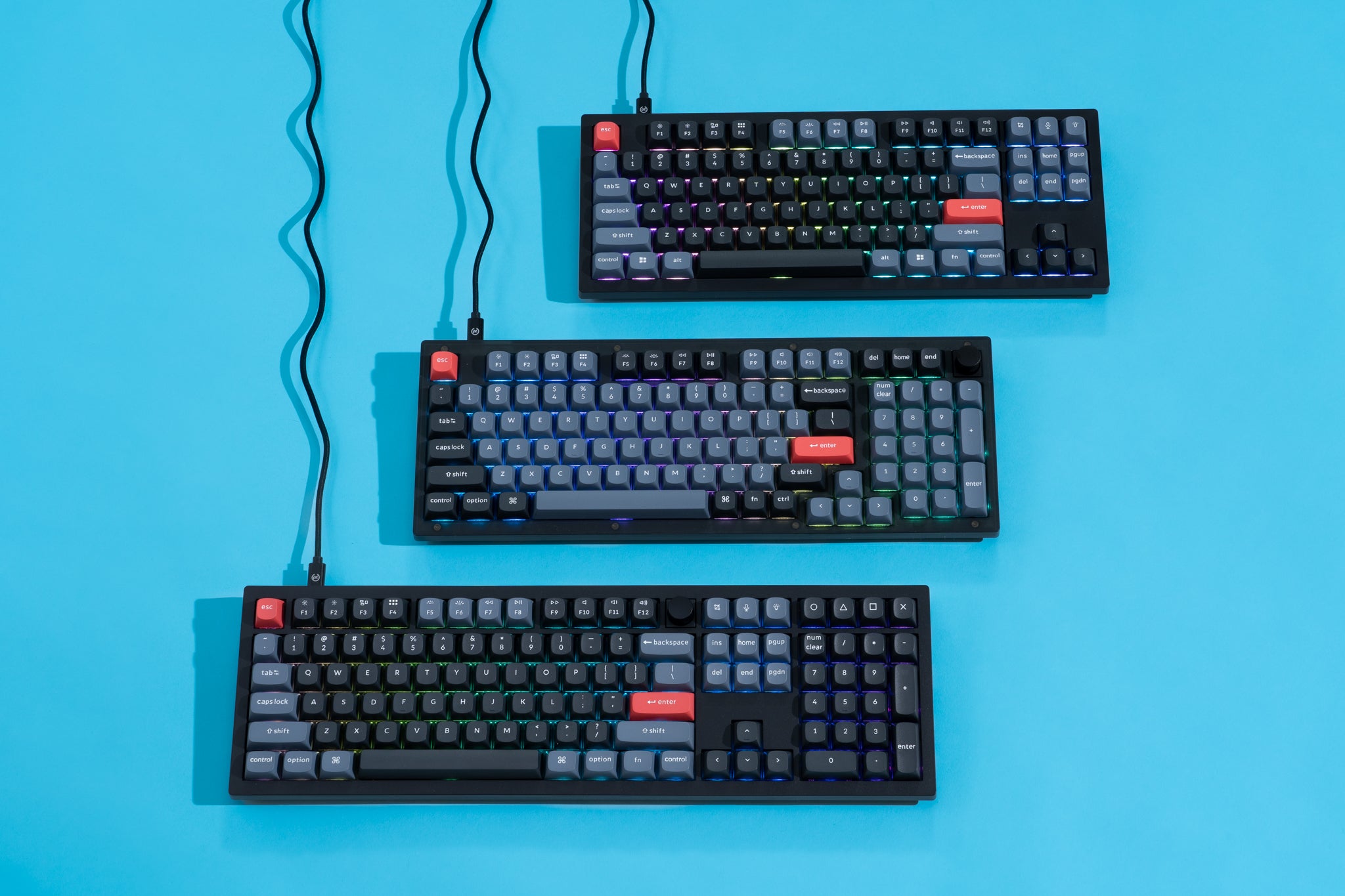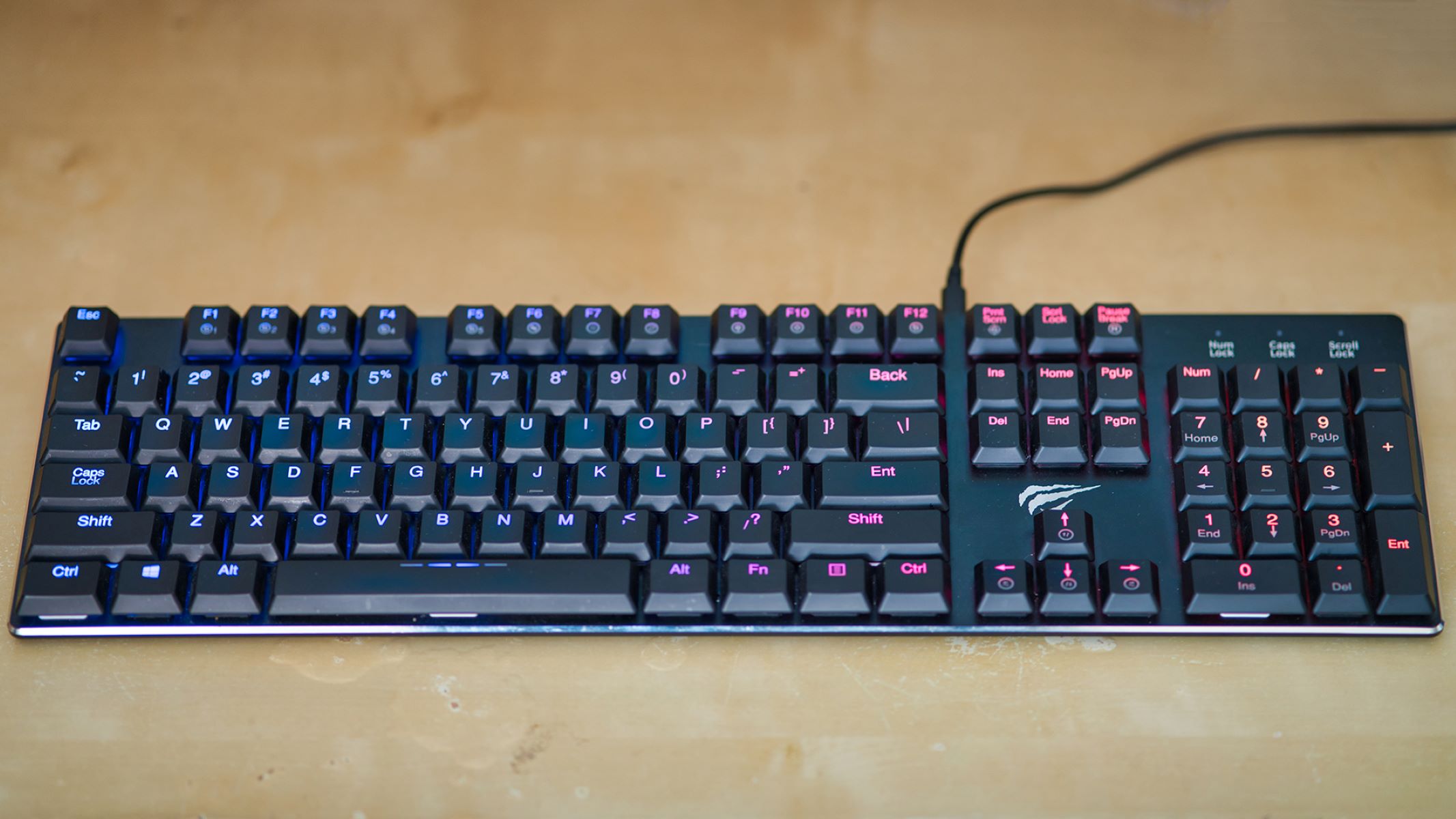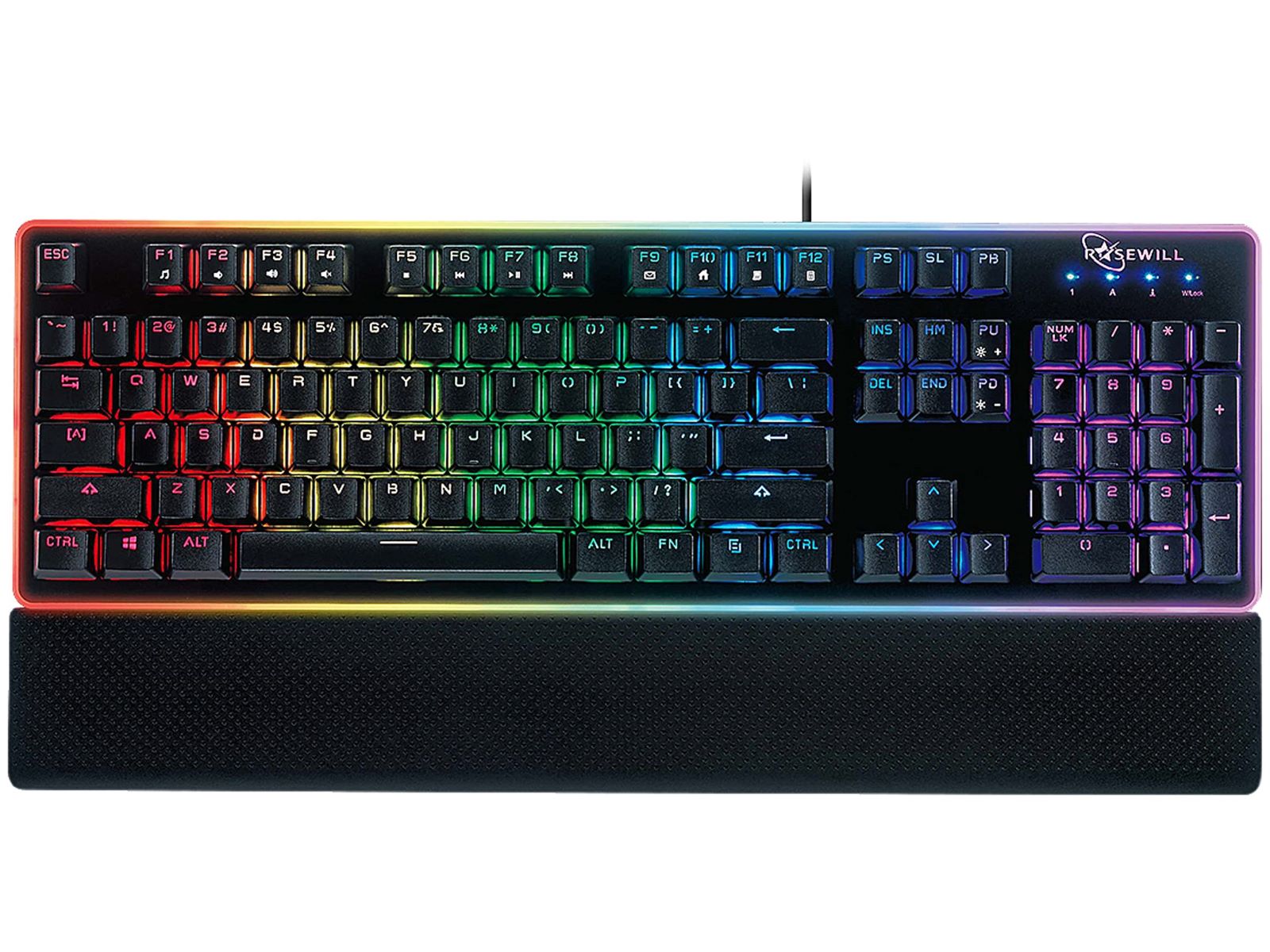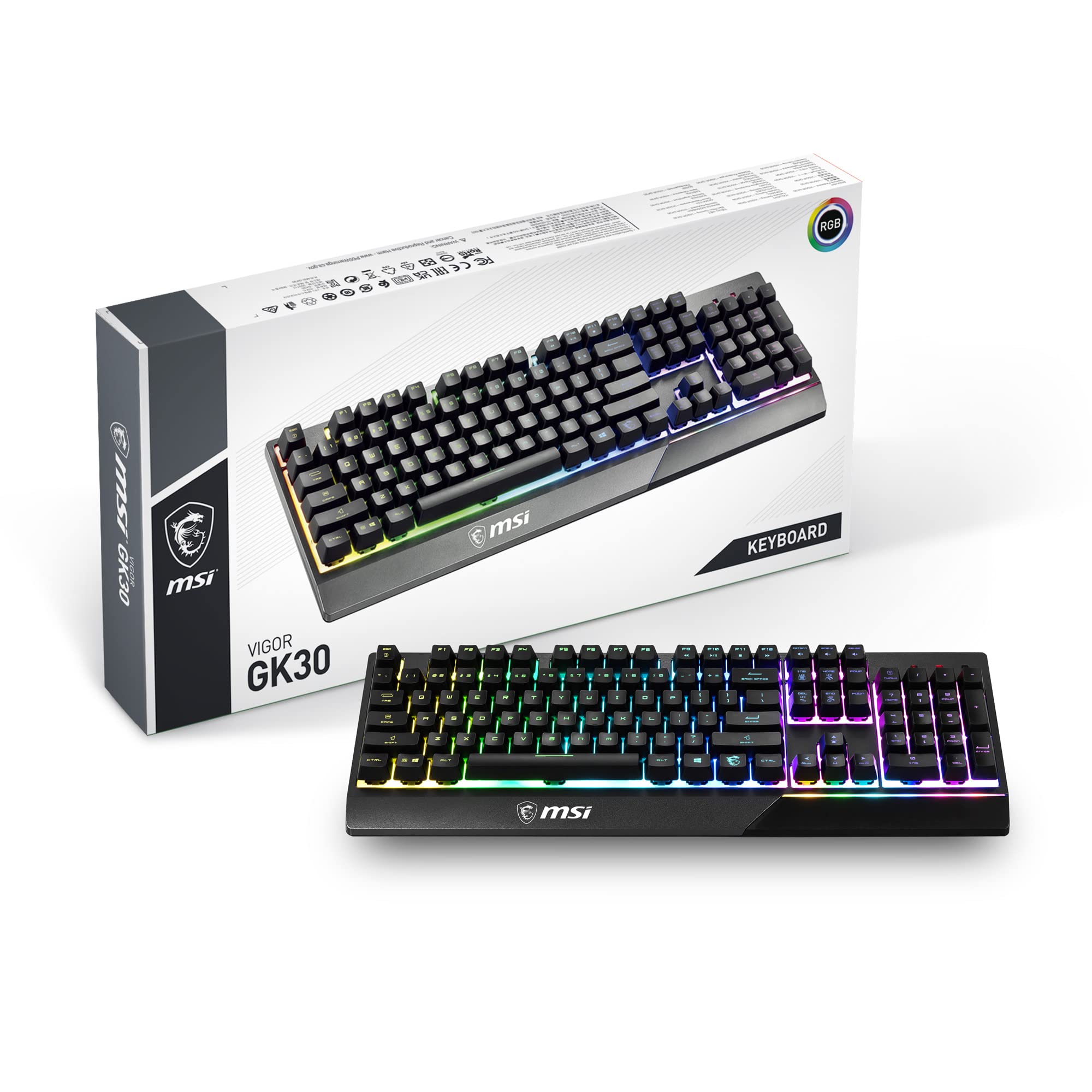Introduction
Welcome to the world of keyboards, where there are countless options to choose from. One popular type of keyboard that has gained quite a following is the 75% keyboard. If you’re not familiar with it, you might be wondering what exactly a 75% keyboard is and how it differs from other keyboards on the market.
A 75% keyboard is a compact keyboard that strikes a balance between functionality and size. It is designed to be smaller than a full-sized keyboard, yet still provide enough keys for everyday use. This makes it a great option for those who want a compact and portable keyboard without sacrificing too much functionality.
With the rising popularity of mechanical keyboards, there is also a growing interest in understanding the different types of switches used in these keyboards. Switches play a crucial role in determining the typing experience, as they determine the feel and sound of each key press.
In this article, we will explore the world of 75% keyboards, delve into the number of keys they have, and discuss the different types of switches used in these keyboards. Whether you’re a keyboard enthusiast or someone looking to upgrade your current keyboard, this article will provide you with valuable insight into the world of 75% keyboards and help you make an informed decision.
What is a 75% keyboard?
A 75% keyboard is a compact keyboard layout that strikes a balance between space-saving design and functionality. It is called “75%” because it retains around 75% of the keys found on a full-sized keyboard while eliminating the number pad and cutting down on other ancillary keys.
While the specific layout can vary slightly between different manufacturers, a typical 75% keyboard will have 84 to 87 keys. The exact number of keys may differ due to variations in keycap sizes or additional programmable keys.
The removal of the number pad allows for a more compact form factor, making 75% keyboards highly desirable for those seeking a space-efficient solution that does not compromise on comfort or typing experience. The reduced size also makes them more portable, fitting easily into backpacks or laptop bags for on-the-go use.
Despite the smaller size, 75% keyboards still maintain the essential keys needed for everyday tasks. They typically include a standard alphanumeric layout, function keys, arrow keys, a navigation cluster, and several modifier keys. This layout ensures that most users can perform their regular typing tasks without any major adjustments or compromises.
Additionally, 75% keyboards often have a dedicated row of keys for multimedia controls or programmable function keys along the top edge, providing convenient access to commonly used shortcuts and commands.
Overall, the 75% keyboard strikes a balance between functionality and space-saving design, making it an ideal choice for users who want a compact keyboard layout without sacrificing essential keys and features.
How many keys does a 75% keyboard have?
A 75% keyboard typically has around 84 to 87 keys, making it a compact yet fully functional option for users. The exact number of keys may vary slightly depending on the specific layout and manufacturer.
To understand the key layout of a 75% keyboard, let’s start with the keys that are present. A standard 75% keyboard will have:
- Alphanumeric keys: These are the keys that make up the main letter and number layout, similar to what you would find on a traditional full-sized keyboard. They include both uppercase and lowercase letters, numbers, and special characters.
- Function keys: Like most keyboards, a 75% variant will have a row of function keys (F1 to F12) that can be used for various functions and shortcuts depending on the software or application being used.
- Arrow keys: A 75% keyboard typically retains the arrow keys, allowing users to navigate documents, spreadsheets, or webpages easily.
- Navigation cluster: This includes keys like Insert, Delete, Home, End, Page Up, and Page Down, which are commonly used for editing and navigating through documents.
- Modifier keys: These keys include Shift, Control, Alt, and sometimes additional Win and Menu keys. Modifier keys are vital for executing various shortcuts and commands in combination with other keys.
It’s important to note that while a 75% keyboard may not have a number pad, some models offer a secondary layer of keys that can be accessed through key combinations or programmable layers. This allows users to have access to numeric keys when needed without sacrificing the overall form factor of the keyboard.
The exact placement and arrangement of keys may differ slightly between manufacturers to accommodate different design choices and user preferences. However, the fundamental goal of a 75% keyboard is to eliminate unnecessary keys while still providing the essential functionality needed for everyday use.
The compact size and efficient layout of a 75% keyboard make it a popular choice for users who want a streamlined and space-saving solution without sacrificing key functionality.
The different types of switches used in a 75% keyboard
When it comes to mechanical keyboards, the type of switches used plays a significant role in the typing experience. Switches determine how each key press feels and sounds, allowing users to find the perfect combination of tactile feedback and actuation force.
There are different types of switches available, each offering unique characteristics. Here are some common types of switches used in 75% keyboards:
- 1. Cherry MX switches: Cherry MX switches are among the most popular and widely used switches in mechanical keyboards. They come in various flavors, including Red, Brown, Blue, Black, and more. Cherry MX Red switches are linear, providing a smooth keystroke with no tactile bump or click sound. Cherry MX Brown switches are tactile, giving a slight tactile feedback without a loud click. Cherry MX Blue switches are both tactile and clicky, providing a satisfying click sound with a tactile bump.
- 2. Gateron switches: Gateron switches are similar in design to Cherry MX switches but are known for being smoother and less expensive. They offer similar options to Cherry MX, including linear, tactile, and clicky variants.
- 3. Kailh switches: Kailh switches are another popular alternative to Cherry MX switches and are known for their affordability and extensive range of options. They offer various types of switches, including linear, tactile, and clicky options.
- 4. Razer switches: Razer, a well-known gaming peripheral brand, has developed their own line of mechanical switches. These switches are designed specifically with gaming in mind, offering a balance of fast actuation and durability.
- 5. NovelKeys switches: NovelKeys is a brand that specializes in custom mechanical switches. They offer unique options with different tactile feedback, actuation forces, and sound characteristics, allowing users to fine-tune their typing experience.
It’s important to note that the typing experience can vary significantly between different switch types. Some users prefer the smoothness and quietness of linear switches, while others enjoy the tactile feedback and audible click of clicky switches. Tactile switches provide a subtle bump when actuated, providing a tactile feedback without the loud click.
When choosing a 75% keyboard, it’s essential to consider the type of switch that best suits your preferences and typing style. Trying out different switch types before making a purchase can help you determine your preferred switch type and ensure an enjoyable typing experience.
Remember, the type of switches used in a 75% keyboard can greatly impact your overall satisfaction and productivity, so it’s worth exploring different options and finding the one that feels just right.
The layout of a 75% keyboard
The layout of a 75% keyboard is designed to strike a balance between functionality and space-saving design. While the specific layout may vary slightly between different manufacturers, the general layout of a 75% keyboard follows a similar pattern.
Despite being a smaller form factor, a 75% keyboard retains the essential keys needed for everyday use. Here are the key components and layout features commonly found in a 75% keyboard:
- Alphanumeric keys: Like a standard keyboard, a 75% keyboard has a row of alphanumeric keys that include both uppercase and lowercase letters, numbers, and special characters. These keys form the foundation of typing and input.
- Function keys: A 75% keyboard typically includes a row of function keys (F1 to F12) located at the top of the keyboard. These keys provide quick access to various functions and shortcuts, depending on the software or application being used.
- Arrow keys: To navigate through documents, spreadsheets, or webpages, a 75% keyboard typically retains a compact set of arrow keys. These arrow keys allow for precise movement in up, down, left, and right directions.
- Navigation cluster: The navigation cluster includes keys such as Insert, Delete, Home, End, Page Up, and Page Down. These keys are essential for editing and navigating through documents efficiently.
- Modifier keys: A 75% keyboard features modifier keys like Shift, Control, and Alt, which are crucial for executing various shortcuts and commands in combination with other keys. Some keyboards may also include additional modifier keys like Win or Menu keys.
- Secondary layer keys: Due to the limited space, some 75% keyboards utilize secondary layers accessed through key combinations or programmable layers. These secondary layers offer access to additional keys, including numeric keys or media control keys, providing extra functionality without sacrificing the compact form factor.
It’s worth noting that the specific layout and arrangement of keys may vary slightly depending on the manufacturer or model. Some keyboards may also have additional customizable keys or dedicated keys for multimedia controls along the top edge of the keyboard.
Despite its smaller size, the layout of a 75% keyboard is carefully designed to provide maximum functionality while reducing excess and unused keys. This makes it an ideal choice for those seeking a compact yet efficient keyboard for both work and play.
How many switches are in a 75% keyboard?
A 75% keyboard typically has the same number of switches as the number of keys on the keyboard, excluding any additional programmable or secondary layer keys. While the specific number may vary slightly depending on the layout and manufacturer, a standard 75% keyboard with its essential keys will have around 84 to 87 switches.
Each switch corresponds to a single key on the keyboard and is responsible for registering the keystroke when pressed. These switches are the heart of a mechanical keyboard, determining the feel, sound, and responsiveness of the keys.
It’s important to note that some 75% keyboards may have additional switches for programmable keys or secondary layers, which can provide extra functionality beyond the standard key layout. These additional switches enable customization and flexibility to suit individual preferences.
When it comes to selecting a 75% keyboard, the number of switches is a crucial factor to consider as it directly impacts the typing experience. The type of switches used in the keyboard, such as Cherry MX, Gateron, or Kailh, will further enhance the overall feel and performance.
Whether you’re a typist, gamer, or someone who spends a significant amount of time on a keyboard, the number and quality of switches in a 75% keyboard are essential aspects to assess. They contribute to the overall satisfaction and enjoyment of typing, ensuring a smooth and comfortable experience for all your keyboarding needs.
Can you customize the switch placement in a 75% keyboard?
Customization is a key aspect that many keyboard enthusiasts value. While a 75% keyboard has a standardized layout, it still offers some degree of customization when it comes to switch placement.
Most 75% keyboards have a fixed switch placement for the standard key layout. This ensures compatibility and ease of use, allowing users to seamlessly transition from one 75% keyboard to another without having to adjust their muscle memory.
However, some 75% keyboards do offer additional customization options, especially when it comes to programmable or secondary layer keys. These keyboards allow users to remap keys, assign macros, and customize the functionality of specific keys to suit their preferences.
With customizable switch placement, users can rearrange the secondary layer or programmable keys to better accommodate their workflow. This allows for a tailored typing experience, where frequently used functions or shortcuts can be easily accessed with a simple key combination.
Additionally, there are DIY keyboard kits and custom keyboard builds available for those who want complete control over the switch placement in their 75% keyboard. These kits often feature hot-swappable switch sockets, allowing users to easily swap out switches without soldering. This level of customization enables users to create a truly unique and personalized keyboard layout.
It’s important to note that while customization options exist for switch placement in a 75% keyboard, they may require more advanced technical knowledge or some DIY skills. However, with the growing community of keyboard enthusiasts and ample resources available online, customizing the switch placement in a 75% keyboard has become more accessible to interested individuals.
Whether you prefer the standard switch placement or want to explore customization options, 75% keyboards offer flexibility and the opportunity to adapt the keyboard to your specific needs and preferences.
The benefits of using a 75% keyboard
Using a 75% keyboard offers several advantages over larger, full-sized keyboards. These benefits make it a popular choice among users seeking a more compact and streamlined typing experience. Here are some of the key advantages of using a 75% keyboard:
- Space-saving design: The primary advantage of a 75% keyboard is its compact size. By eliminating the number pad and unnecessary ancillary keys, it takes up less space on your desk. This allows for more room to move your mouse or other peripherals, promoting a more ergonomic and comfortable work setup.
- Portability: The smaller form factor of a 75% keyboard makes it highly portable. It easily fits into laptop bags, backpacks, or even a briefcase, allowing you to take it with you wherever you go. This makes it a great option for students, professionals, and anyone who needs a reliable keyboard on the go.
- Efficiency: Although a 75% keyboard is smaller, it retains the essential keys needed for everyday tasks. The compact layout ensures that all the frequently used keys, such as alphanumeric keys, arrow keys, and function keys, are easily accessible. This promotes faster and more efficient typing, reducing the need for excessive hand movement.
- Improved ergonomics: With a 75% keyboard, your hands and wrists are closer together, reducing strain and fatigue. This can help improve typing comfort and minimize the risk of repetitive strain injuries like carpal tunnel syndrome. Additionally, a more balanced positioning of the keyboard and mouse can enhance overall ergonomics and promote a healthier posture.
- Customization options: While some 75% keyboards have a standardized layout, many offer customization options for secondary layer or programmable keys. This allows users to remap keys, assign macros, and personalize the keyboard to their specific needs and preferences. Customization can enhance productivity and streamline workflows by placing often-used functions at your fingertips.
- Aesthetic appeal: Aesthetics also play a role in the popularity of 75% keyboards. Their compact and sleek design adds a touch of modernity to any workspace. Additionally, customization options like unique keycap sets, different case materials, and vibrant lighting effects allow users to personalize the appearance of their keyboard.
Overall, a 75% keyboard strikes a balance between functionality and space-saving design. It offers the essential keys needed for everyday use, while providing the benefits of increased portability, improved ergonomics, and customization options. Whether you’re a student, professional, or keyboard enthusiast, a 75% keyboard can be an excellent choice for a more efficient, comfortable, and aesthetically pleasing typing experience.
Conclusion
In conclusion, a 75% keyboard is a compact and functional option for users seeking a space-saving solution without sacrificing essential keys and features. With around 84 to 87 keys, a 75% keyboard retains the necessary alphanumeric keys, function keys, arrow keys, and modifier keys needed for everyday tasks. The layout of a 75% keyboard strikes a balance between functionality and size, ensuring a comfortable and efficient typing experience.
When it comes to switch options, 75% keyboards offer a range of choices, including popular options like Cherry MX, Gateron, and Kailh switches. The type of switches used greatly influences the feel and sound of each keystroke, allowing users to customize their typing experience according to their preferences.
While customization options for switch placement in a standard 75% keyboard may be limited, some keyboards offer programmable or secondary layer keys that allow users to remap keys or assign macros for added versatility. Additionally, there are DIY keyboard kits available for those who want complete control over the switch placement.
Using a 75% keyboard offers numerous benefits such as space-saving design, portability, improved ergonomics, efficiency, and customization options. These advantages make 75% keyboards a popular choice for a wide range of users, including students, professionals, and keyboard enthusiasts.
Whether you’re looking for a compact keyboard for work, gaming, or general everyday use, a 75% keyboard can provide a streamlined and enjoyable typing experience. Its balance of functionality, portability, and customization options make it a versatile option for those seeking a sleek and efficient keyboard solution.







